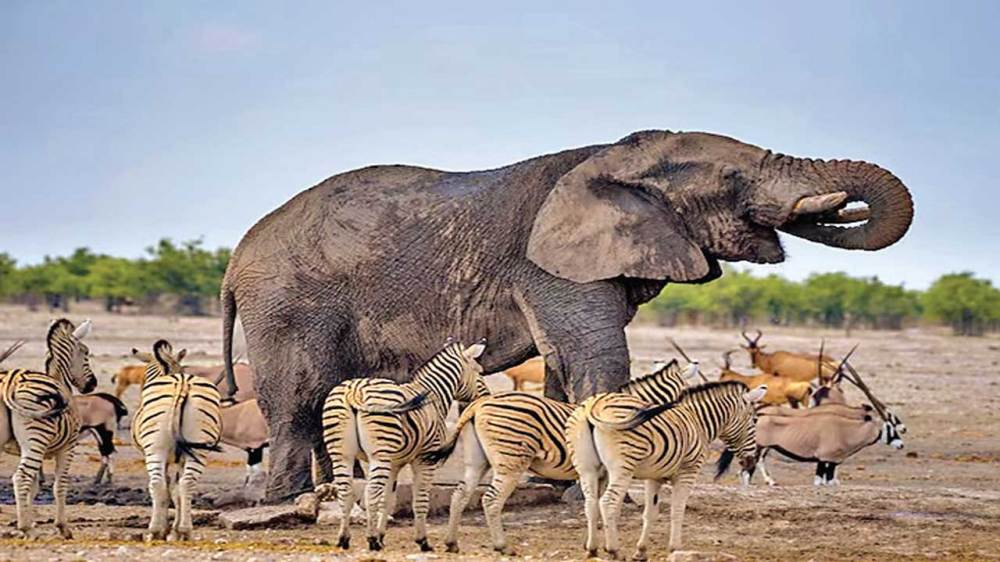
Namibia, facing its worst drought in 100 years, has decided to kill more than 700 wild animals, including elephants, hippos, deer, sabretooths and zebras, to feed hungry countrymen.
These animals will be slaughtered and their meat will be distributed among hungry people. According to the Namibian Ministry of Forests, Environment and Tourism, a total of 723 wild animals will be slaughtered, including 300 zebras, 100 blue wildebeests, 100 sabretooths, 83 elephants, 60 buffaloes, 50 impalas (South African small deer) and 30 hippos. In May this year, Namibia declared a state of emergency due to worsening drought conditions. About 1.4 lakh people in the country (more than 50 percent of the population) are severely food insecure. Hunger in Namibia has also exacerbated problems such as inflation, economic shocks and unemployment.
The cattle for slaughter will be brought from national parks and communal areas including Namib Naukluft Park, Mangatti National Park, Bwabwata National Park, Mudumu National Park and Nakasa Rupara National Park and hunted by professional hunters. The Ministry of Forest, Environment and Tourism said that the slaughter of elephants will also reduce the incidence of their conflict with humans. It will also reduce the burden on water resources of forest areas.
262 animals were slaughtered
In Namibia, 262 cattle have been slaughtered since the drought, including 157 in Mangatti National Park, 20 in Mahano, 70 in Kwando, 6 in Buffalo and 9 in Mudumo. A total of 1.25 lakh kilograms of meat was obtained from these wild animal hunts and distributed among hungry people.
There are more than 2.5 lakh elephants in South Africa
South Africa is considered the elephant stronghold, with more than 250,000 elephants. However, many elephants are reported to have died in Namibia last year due to drought that dried up water sources. In Zimbabwe, about 100 elephants died in its largest national park last year due to drought. South Africa's Kavango-Zambezi (KAZA) Conservation Area, which stretches across Zimbabwe, Zambia, Botswana, Angola and Namibia, has an estimated 2.28 million elephants, of which Namibia has an estimated 21,000.
Drought in Namibia due to El Nino
Many southern African countries, including Namibia, are experiencing devastating droughts as a result of El Niño. Rainfall in the region has decreased drastically since El Niño struck. The lack of rain combined with unbearable heat has caused crops to dry up and hunger to increase in the region, affecting hundreds of thousands of people. According to the National Oceanic and Atmospheric Administration, climate change could worsen El Niño conditions and lead to new records for maximum temperatures.
A massive drop of 53% in grain production
The drought has caused grain production in Namibia to drop by 53 percent and water levels in Demos to drop by 70 percent. On May 22, a state of emergency was declared in the country. Earlier, Malawi, Zambia and Zimbabwe had also declared a state of emergency due to drought.
 look news india
look news india